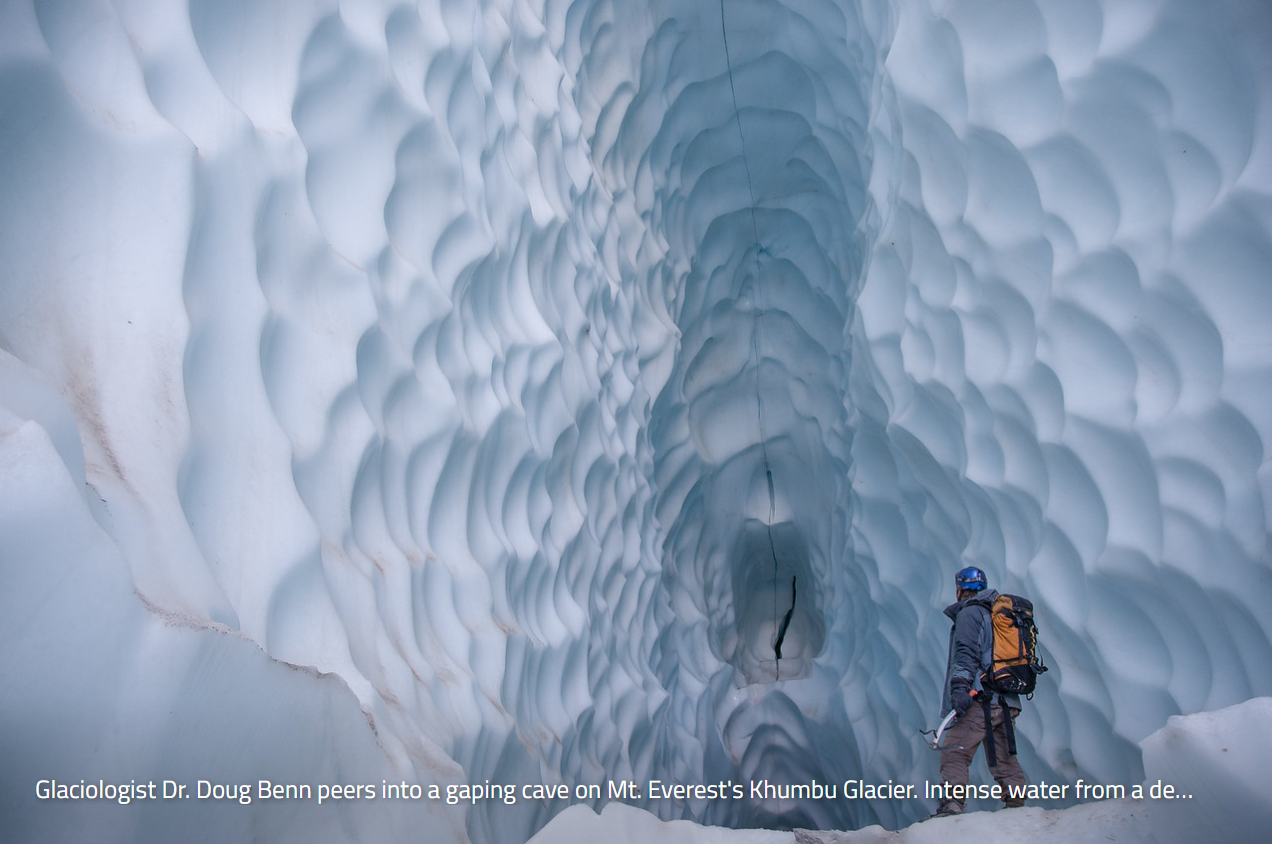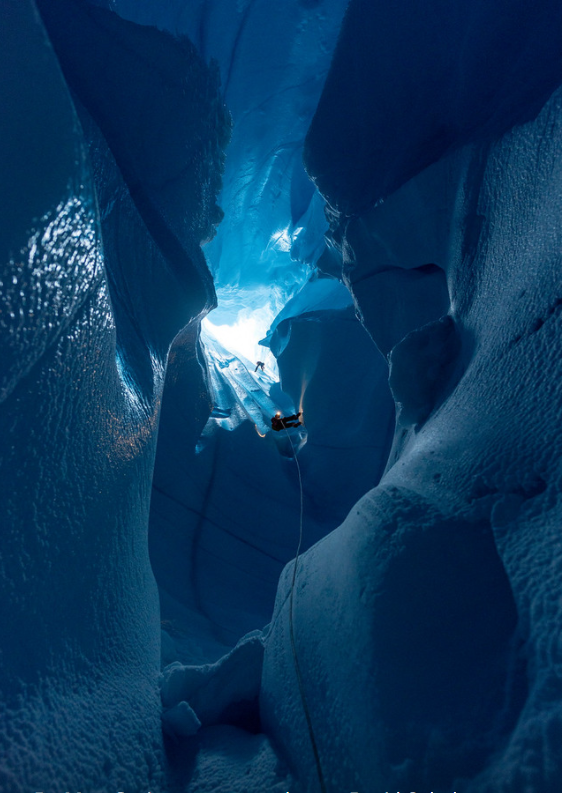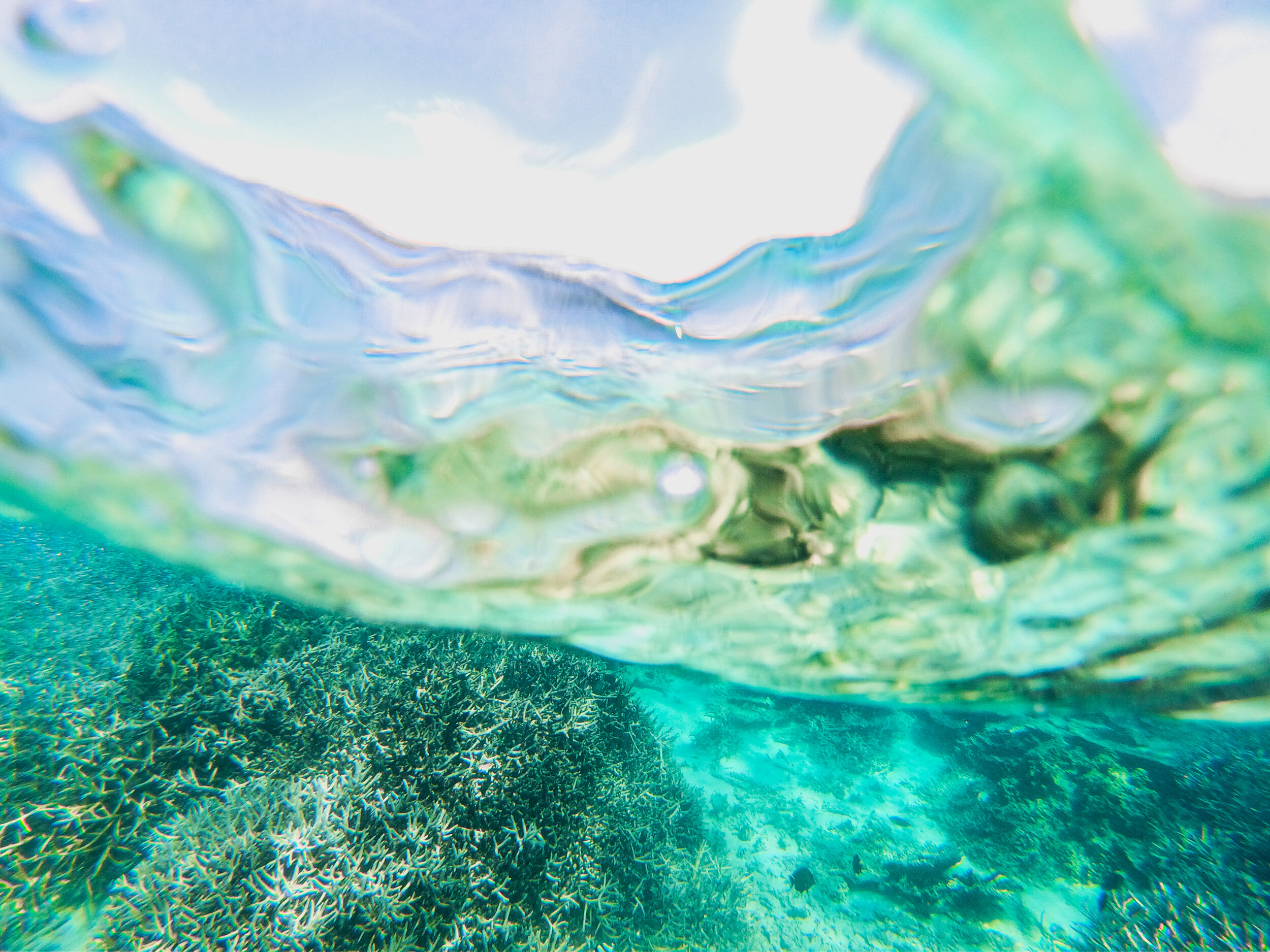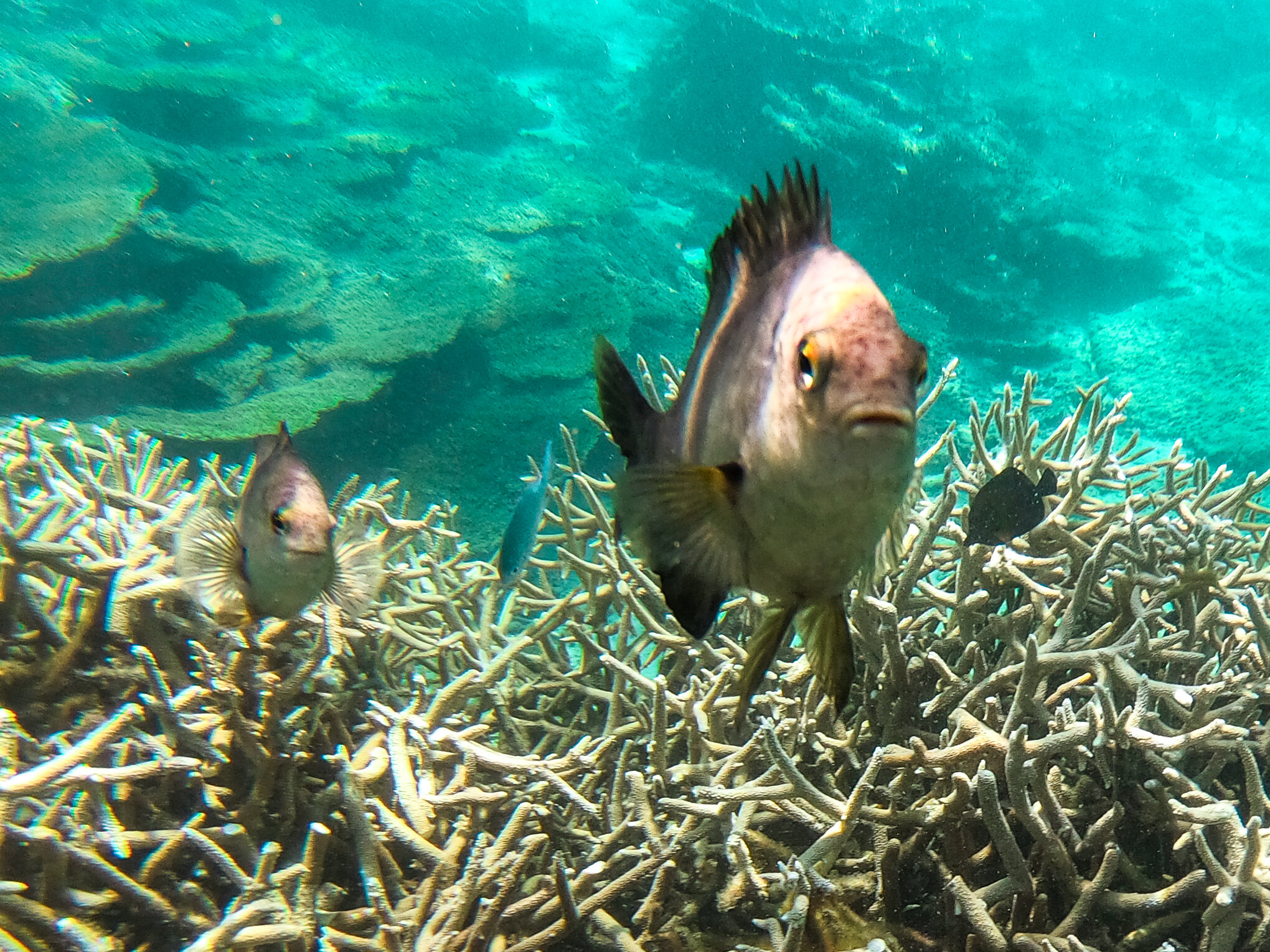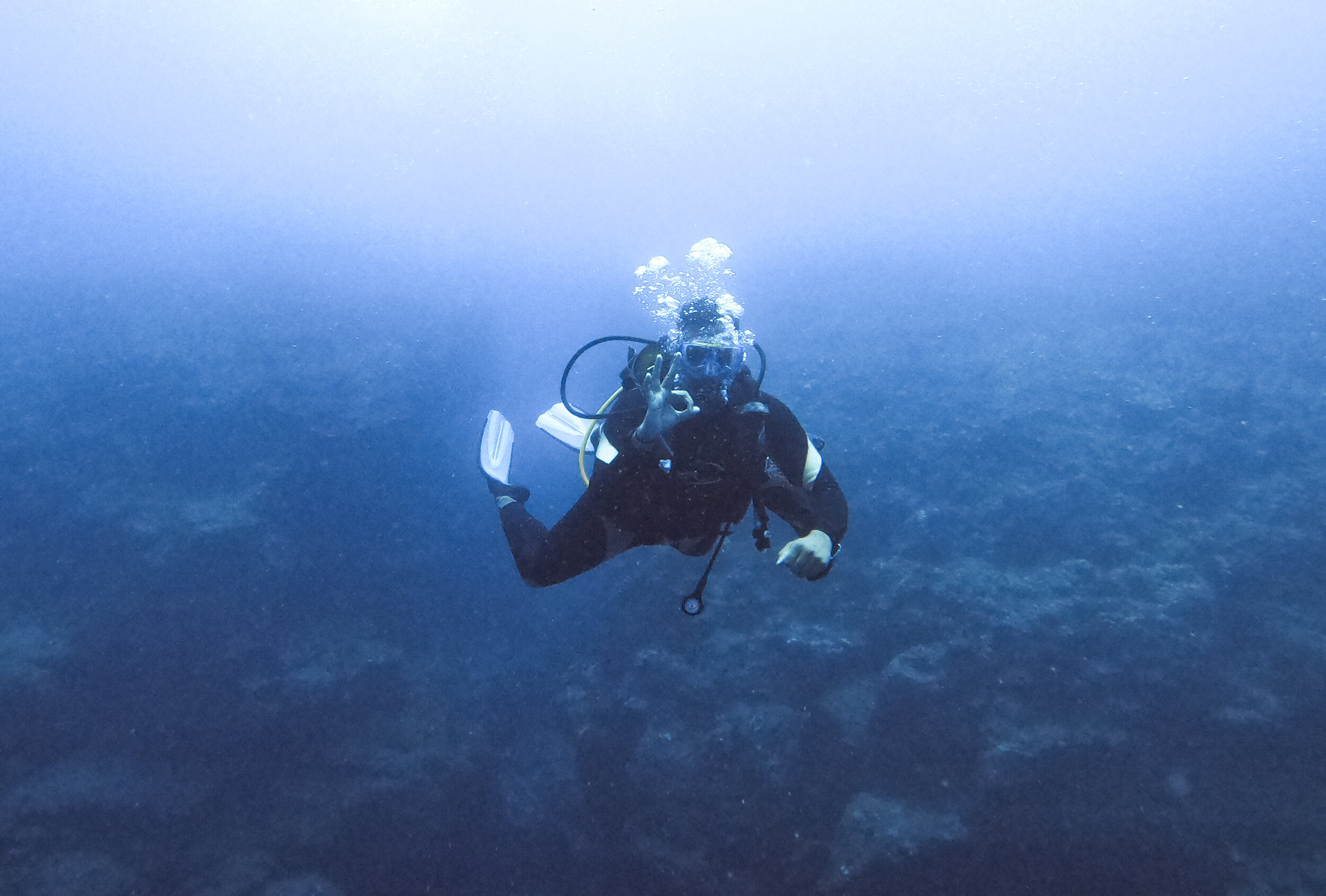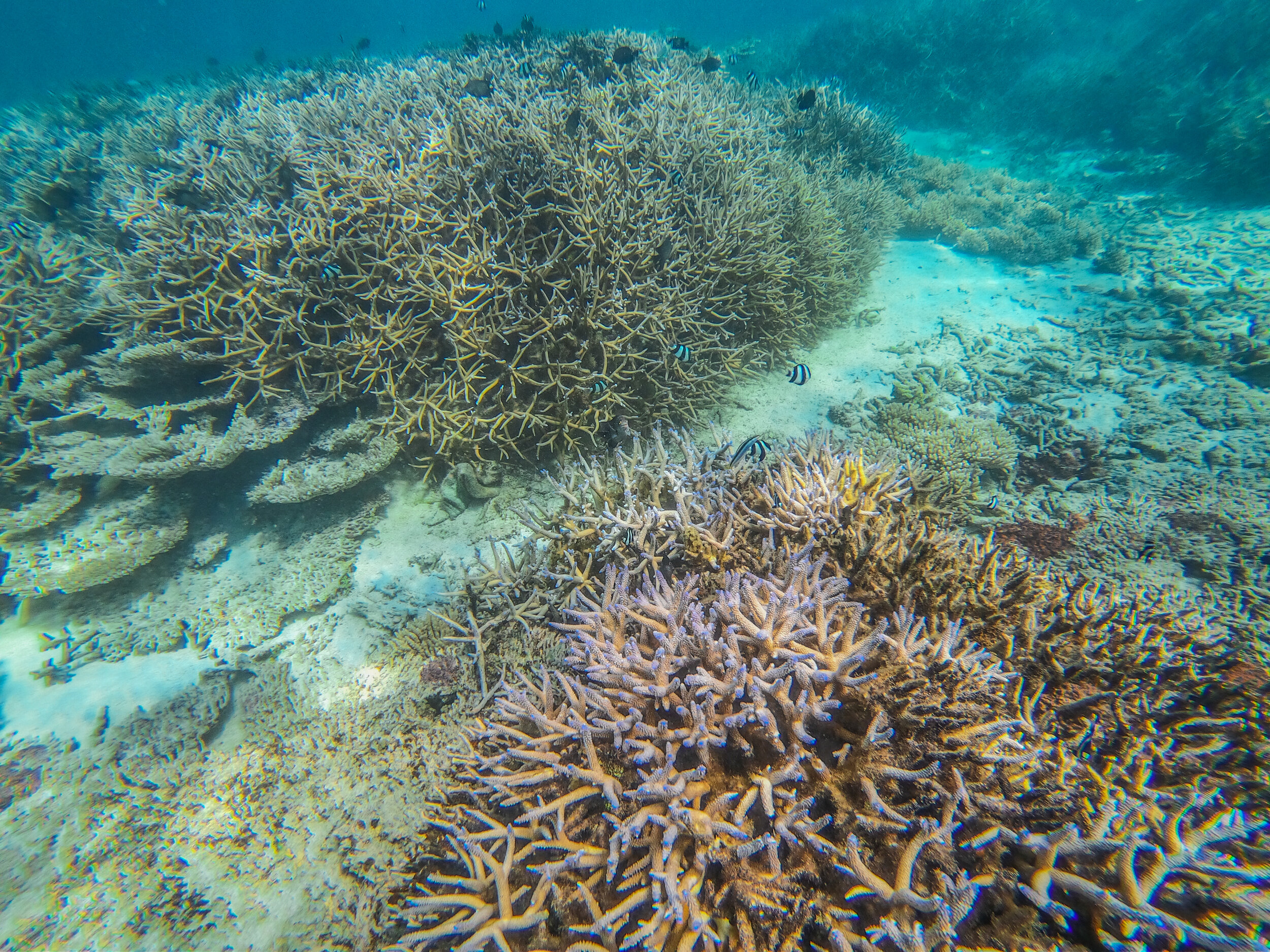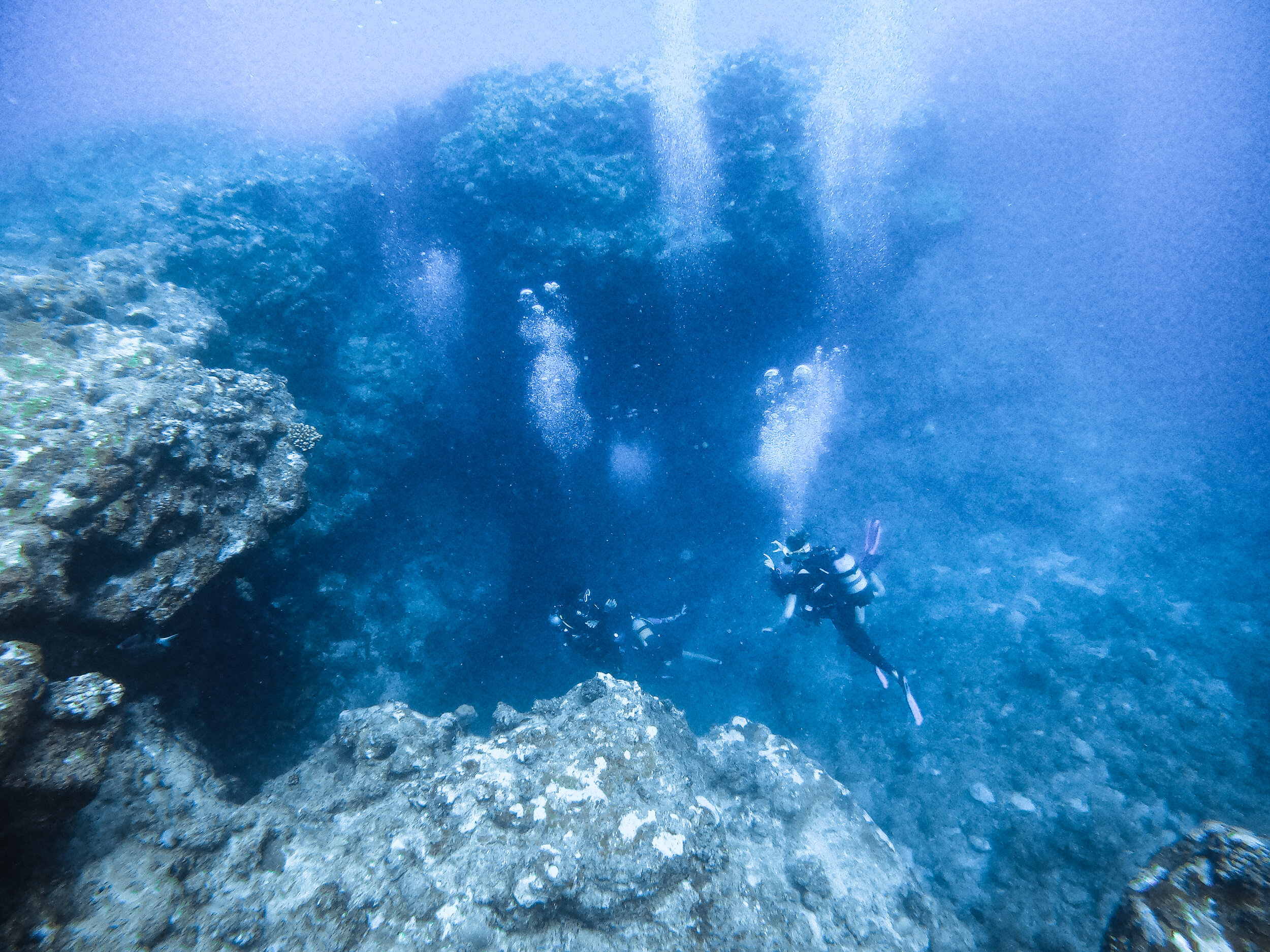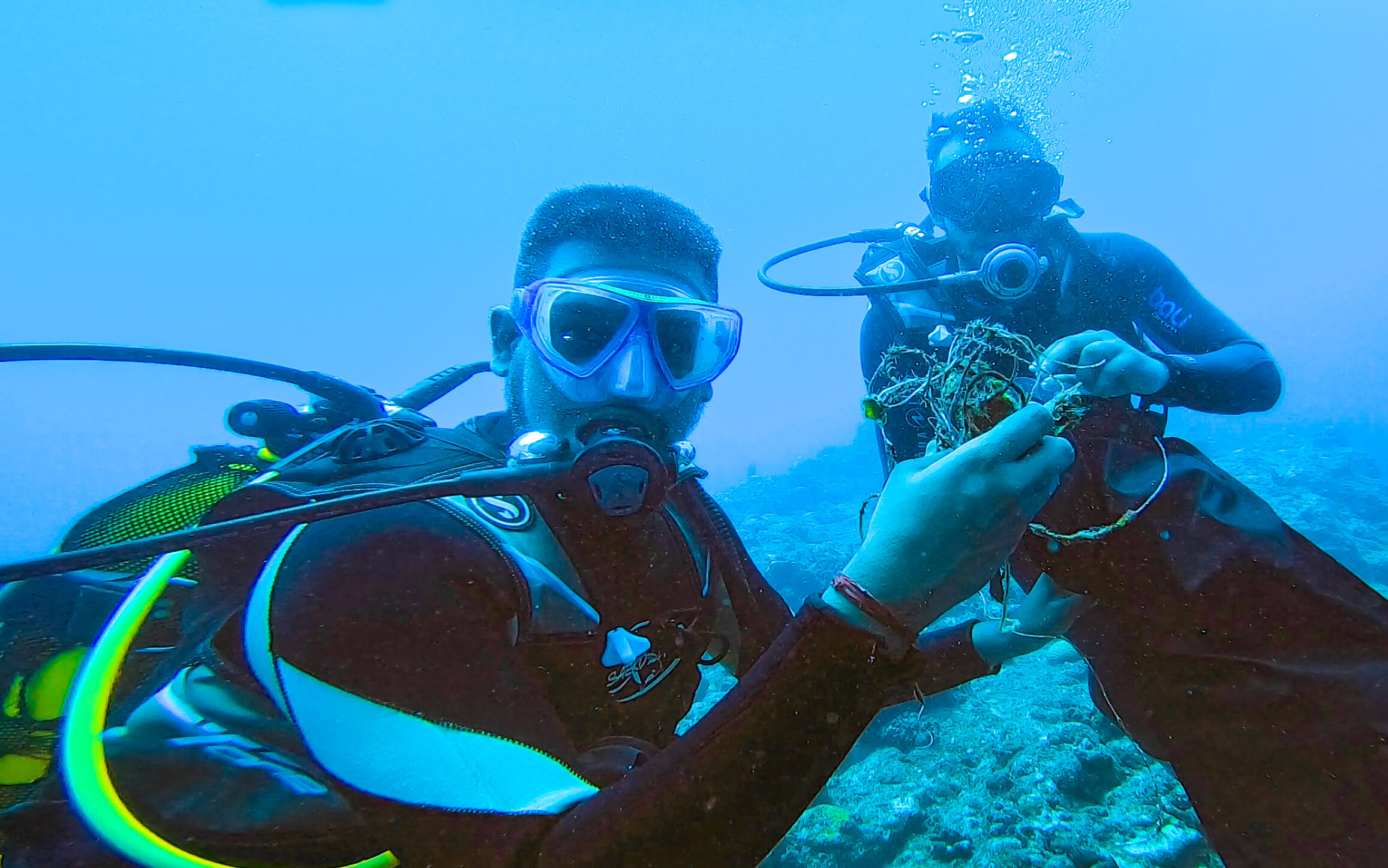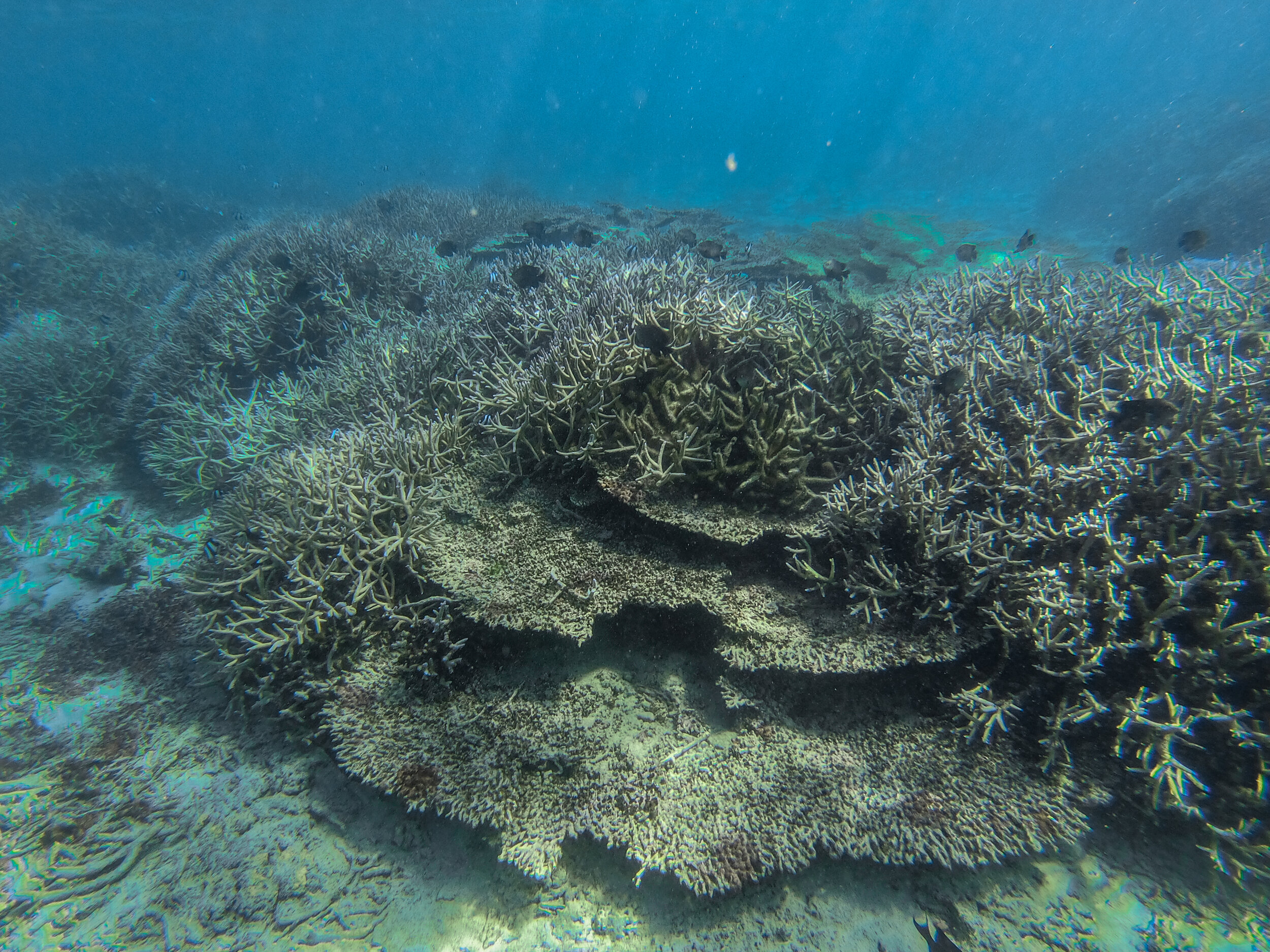Spotlight: Dr. Jason Gulley
Location: Tampa, FL, USA
Dr. Jason Gulley is an associate professor of geology at the University of South Florida. He studies the hydrology of glaciers and ice sheets as well as limestone terrains. Dr. Gulley uses caves and cave exploration techniques to access many of his study sites. In addition to being a competent vertical caver, Dr. Gulley has been cave diving for more than 20 years and is a cave diving and rebreather instructor.
What sort of life forms do you see in when you go cave diving?
“Probably the coolest thing you’ll see in underwater caves, and it varies quite a lot depending on what part of the world you’re in, you have these entire ecosystems that have adapted to life in perpetual darkness, much like on the bottom of the sea floor, so there’s very little nutrients that are available to feed these ecosystems, so it’s not like you’re swimming around on a coral reef in Palau and there’s just like 10,000 fish swimming around everywhere.
But there are these very amazing cave organisms that have very slow metabolisms that have adapted to a life of starvation and darkness. They live for very long periods of time, their bodies are translucent they have no eyes, they spend their entire life inside the cave.
The largest things you’ll find is some cave adapted fish, 10 cm long. Types of shrimp/crustaceans, and microbes. Crazy populations of microbes. From cenote Angelita, there is this cloud of microbial organisms that live in the interface between fresh water and salt water from coastal aquifers. There is a small contrast in density from the freshwater at the top and the seawater on the bottom. So that when organic matter rains in from trees and stuff on the surface, it floats down through the freshwater and then it gets held back at the density interface and a whole cloud of microbes just eat all that organic matter that accumulates right at that horizon.
You and your team have been the first people to do exploration inside glacier caves. How did you map the unknown?
The work we were doing was the first mainstream scientific research inside glacier caves. We were first people that did any exploration inside glacier caves in the Everest region. One of challenges we ran into was that there were very few people to go to for advice who were working inside glacier caves, especially in the Everest region. The biggest challenge that we ran into is that we didn’t know what was dangerous. Anytime you start working in a new environment, trying to figure out what’s dangerous is the hardest thing.
As a cave diving instructor, I spend a lot of time teaching students. When they go into this new environment, I share what I’ve learned, “here are some skills that are going to help keep you safe, here are some dangers you can avoid, and here are some specific techniques for dealing with those dangers inside a cave.”
The problem we had was that we didn’t know what was dangerous. Everything was new to us. We didn’t know what to avoid. The first cave we went into, we had a partial ceiling collapse. The second cave we went into, I fell through the floor. Fortunately, I fell only a meter and a half to two meters.
I thought there were going to be similarities to limestone caves, but there were differences too. We systematically took things very slow. I had a strong caving background, the glaciologist I worked with had a very strong mountaineering background. Between our two backgrounds we had a healthy respect for the environment. We managed to survive everything that happened. Over a couple of years and couples of close calls. We more or less figure out all the dangerous things we could experience in a glacier cave.
Glaciologist Dr. Doug Benn peers into a gaping cave on Mt. Everest's Khumbu Glacier. Intense water from a deep glacier lake pried open a fracture to form this cave, which rapidly drained the lake into the ice. Scallops, the dish-shaped features on the cave walls and ceiling, record the turbulent flow of water as it surged into the glacier.
To follow up, what are the dangerous situations you’ve found yourself in?
One of the biggest surprises for us in Nepal, were that the caves were all horizontal. We had expected them to be deep shafts far below the surface. There weren’t any climbing dangers associated. What would happen during the day, if temp got above freezing, the ice near entrances would start melting back.
A lot of the caves in Everest are covered by a couple meters of rocky debris so as ice started melting back you’d have these big blocks of rock that would just rain down in the entrance. These big rocks that are basketball or desk sized rocks. So if you went in the morning when It was nice and cool, you came out in the afternoon and it was warm you’d have to run really fast. You couldn’t see anything and have to run out very fast, then guide everyone else and they’d run really fast.
The big problem we ran into were false floors. Because the caves are horizontal, there’s a surface hydrological network of lakes that are constantly forming and draining. As they drain, they form caves. If you have a lake that expands and backs up into a cave that already formed, you can freeze the surface of the lake. If it gets cold for short periods of time, and if the lake level drops you end up with a very thin layer of ice that looks like a floor. One of the things in Nepal is that its super dusty in and around the Everest base camp. And all that dust blows into these caves and it coats the floor, so all you see is dust covered ice. It took us a while to figure out these floors weren’t composed of glacier ice, they were composed of these thin sections, and after I fell through one or two we started testing the floors.
Something fairly universal in all caves are unstable wall features and large blocks of ice falling from the ceiling. Ice is often pretty brittle. Especially if temperature is pretty cold and ice is under pressure. You’ve got all this ice that’s pushing in on the walls of the cave and then if the ice is really cold it just wants to crack and fracture to release the stresses. You can cause these explosions of ice if you’re climbing on them. You’ll get these big super loud cracks. That’ll radiate meters away from ice axes, you’ll get big dinner plates of ice.
To switch gears here, do you any predictions for sea level?
All the reports on sea level rise suggest that we’re on track for kind of the worst-case scenario. Sea levels are rising faster than people could predict they would possibly rise.
There is a lot we don’t know, but we know humans are causing sea level rise largely by causing glaciers to melt by pumping carbon dioxide into the atmosphere, which is warming the planet. Exactly how fast and how much sea level rise is going to occur is an area of massive amounts of research right now. Current projects are somewhere between half a meter to about a meter and a half between now and 2100 depending on various circumstances, one of which being how much c02 we can produce.
There’s a lot of uncertainty. There’s a lot we don’t understand.
One of those are feedbacks between melting and motion of glaciers. The Greenland ice sheet doesn’t just melt. Its not just a giant ice cube that doesn’t move. Its rivers of ice that are streaming from the inside of the ice sheet out towards the coast.
Dr. Matt Covington, top, and caver David Ochel rappel into a deep moulin on the Greenland Ice Sheet
How fast they move is partly controlled by water pressure at the base of the ice sheet. So, in summer when the ice sheet is melting, meltwater runs off flows into glacier caves, spreads out at the base of the sheet and it lubricates the contact between the ice and the underlying landscape. So the ice is sliding much faster in summer when the ice sheet is melting than in winter when there’s no meltwater flowing in the ice sheet.
A good analogy is hydroplaning with a car. If you’re driving a car and you slam on the brakes and you have dry pavement underneath you, your car slows quite quickly. But if you slam brakes and there’s water underneath you can slide quickly, and that’s what the ice sheet is doing.
Another process is caving, or how quickly we produce icebergs, which can fall off the ice sheet and raise sea level. What we discovered in the last ten years is that there are these warm ocean currents that are flowing into underneath Antarctica. And the Greenland ice sheet and they’re melting ice. There are several ways for sea level to rise maybe faster than people thought was possible 20 years ago.
Spotlight : Prashant Mohesh
Featuring Prashant Mohesh from Mauritius
Location: Port Louis, Mauritius
Founder and Expedition Leader at The Oceanic Project, Freelance Photographer, Citizen Scientist, PADI Certified diver with a speciality dive by Project Aware. Explorer, National Geographic #GenGeo community member; which consists of young leaders around the world who are seeking solutions to help protect our planet. Earth Strategy member and Former student at Curtin Mauritius, majoring in Graphic Design.
“Young people are brave and full of hope. They have the ideas, creativity and energy to shape a better world. We should educate and inspire them to become problem solvers so that they can be on the frontline of the most urgent issues of our time to generate a positive social change.”
What is “The Oceanic Project” and what is your role?
I am the Founder and Expedition Leader of The Oceanic Project. My role is to ensure that my team is working to educate the youth on ocean conservation projects and engaging them in beach clean ups. Divers on our team go underwater on a mission to collect data about plastic pollution, micro plastics, coral bleaching, and adopting a dive site. As the Founder of this organisation, I always aim to be a role model to my team members and to society. The Oceanic Project has expanded to Rodrigues, a small, (often overlooked) island in the Indian Ocean. The youth there have great talents but don’t have opportunities to make their voice heard.
Despite work becoming really hectic when monitoring our team in Mauritius and Rodrigues, I love what I do. Love is the only force that gives strength and courage, and serves as my motivation to take action protecting our planet.
What do you do with Project Aware?
I am a PADI Certified Diver with a specialty dive by Project Aware which is the Dive Against Debris. I always dive with a purpose and I assume responsibility for maintaining ocean health and also adopting a dive site. I remove marine debris, collect data, weigh the debris, and then record it online in My Ocean Community. The data will be used by Project Aware to create future protection measures for our ocean.
Can you talk about your experience with the Mauritian Oil Spill?
A ship named M.V. Wakashio lost control and crashed into our pristine coral reefs in the southern part of the island on 25 July 2020. The ship began leaking 1000 tons of heavy oil and then broke apart in mid August. Soon after, thousands of volunteers from across the island arrived in the town of Mahébourg to help clean up.
I was among many of the youth volunteers helping in assembling makeshift floating booms(?) out of sugarcane leaves and other basic materials to contain the spill. Mauritians were working day and night for weeks. It was great to see such a big mobilization.
However, the oil spill had many victims. There were dolphins, whales, turtles and fish that washed up dead on the shore. The most sobering moment was when a group of fishermen saw a dying mother dolphin struggling to save its baby. The baby dolphin was rolling over on its side, floating on the surface, but the fishermen couldn’t do anything to help save the baby. That was the worst environmental disaster ever in Mauritius.
What does “Taking matters into your own hands” mean to you?
We should not wait for the government to take time, react and take action. The youth are bold and dynamic. Across many countries, we see that there is a “youth quake.” The youth are taking action and raising their voice for issues that are important to all of us and also mobilizing others to be on the frontline. Young people are the source of ideas, innovation and solutions for the future. We should educate and inspire them to become problem solvers so that they can be on the frontline of the most urgent and pressing issues of our time and take matters in their own hand and become critical agents of change.
What do you do at Crystal Divers and how does that relate to ocean conservation
Crystal Divers Mauritius is a 5 star PADI Instructor Development Centre. Their resort has a purpose built training pool, available for use by all their students and they are one of two centres on the island to have been awarded the PADI Green Star Award/becoming an Eco Resort by reducing their overall carbon footprint. This is based on their dedication to conservation across a wide range of business functions, including water conservation, energy use, effective waste management, environmentally friendly transportation practices, the use of sustainable materials and the conservation of materials.
I’ve been working with them during a Summer Camp called STEM Marine Conservation that is usually organized for kids 8-14 years old. I have been teaching them about #PlanetOrPlastic, National Geographic multi year effort to raise awareness about the global plastic trash crisis. We also took the pledge by choosing Planet over Plastic. We then made a beach clean up at Bain Boeuf. After the clean up, we made some DIY fun activities from plastic bottles. I’ve put myself in the place of these kids, by thinking creatively of fun some ideas and solutions about how to make them understand that we need to cut the use and single use plastic. My idea was to engage these kids to flower pots from plastic bottles and bracelets. This little activity made them reflect on how plastic takes many years to decompose and that we ought to stop using plastic. This activity has also encouraged them to plant trees and build a connection with Mother Nature.
Do you have any thoughts on witnessing “coral bleaching” events firsthand?
Yes I have! A recent experience was when I was leading a survey expedition on February 20th, 2021 at Blue Bay Marine Park with a marine biologist from The Oceanic Project. We saw how much of our corals are bleaching and dying. We came across a graveyard of dead corals. Coral reefs are like Las Vegas, a city that never sleeps, always in movement. It’s so sad to see fish still calling this their home. This marine park was supposed to be protected by the authorities, but there's a sore lack of that. If we don’t take action to protect our ocean, in the next 30-40 years, all shallow water corals might become extinct. On top of that, it is estimated that in 2050 there will be more plastic in the ocean than fish.
What are your future goals for Mauritius and your peers?
All voices deserve to be heard but in today’s society, youth often don’t feel safe, and can’t advocate for themselves. The Oceanic Project is the voice of tomorrow. We aim to educate others and take action to protect our blue planet. We also want to show them that their opinions, feelings, and perspectives matter and they need to stand up, speak out, and take action because that might inspire others youths around the world. The Oceanic Project is also on a mission to protect 30% of the ocean by 2030 #30x30vision .
What is your role in youth empowerment and have you had any success stories
Mauritians are more or less concerned about the environment. They are empowered and motivated only when environmental catastrophe happens. It is really difficult to compel someone because they might tell me “I am busy, I don’t have time for that.” I had only one friend who I inspired and we’ve been working together for 12 years to make a difference and protect our planet.
This was my first empowerment to inspire someone. We’ve been hiking many mountains in Mauritius and we’ve been making a difference by collecting trash every time we hike. Like we dive with a purpose, we hike with a purpose. After 12 years, in October 2020, we created The Oceanic Project. By sharing some of my exploration photography on my Instagram account, people saw how human impact is affecting our planet. They saw there is power in one person and some people started messaging me that they want to bring their contributions to The Oceanic Project. Our team has been growing in Mauritius and Rodrigues island. I’m grateful for all these young people's efforts and commitment to protect our planet.



